We’ll see you in there.
Connect to customize your food & drink discovery.
By signing up you agree to our Terms of Service and Privacy Policy.
Japanese
Overpressure Club

Based on initial evidence, Overpressure might seem like a head-scratchingly, logic-defyingly weird name for a new Japanese-inspired cocktail bar on Bloor Street West.
For starters, there’s nothing remotely high pressure about the decor: warm exposed brick, smooth marble, cushy leather and walls in an inviting shade of coral, hung with funky, manga-inspired Ghost in the Shell art (the space was designed by Justin Vinet and Yana Kaz).
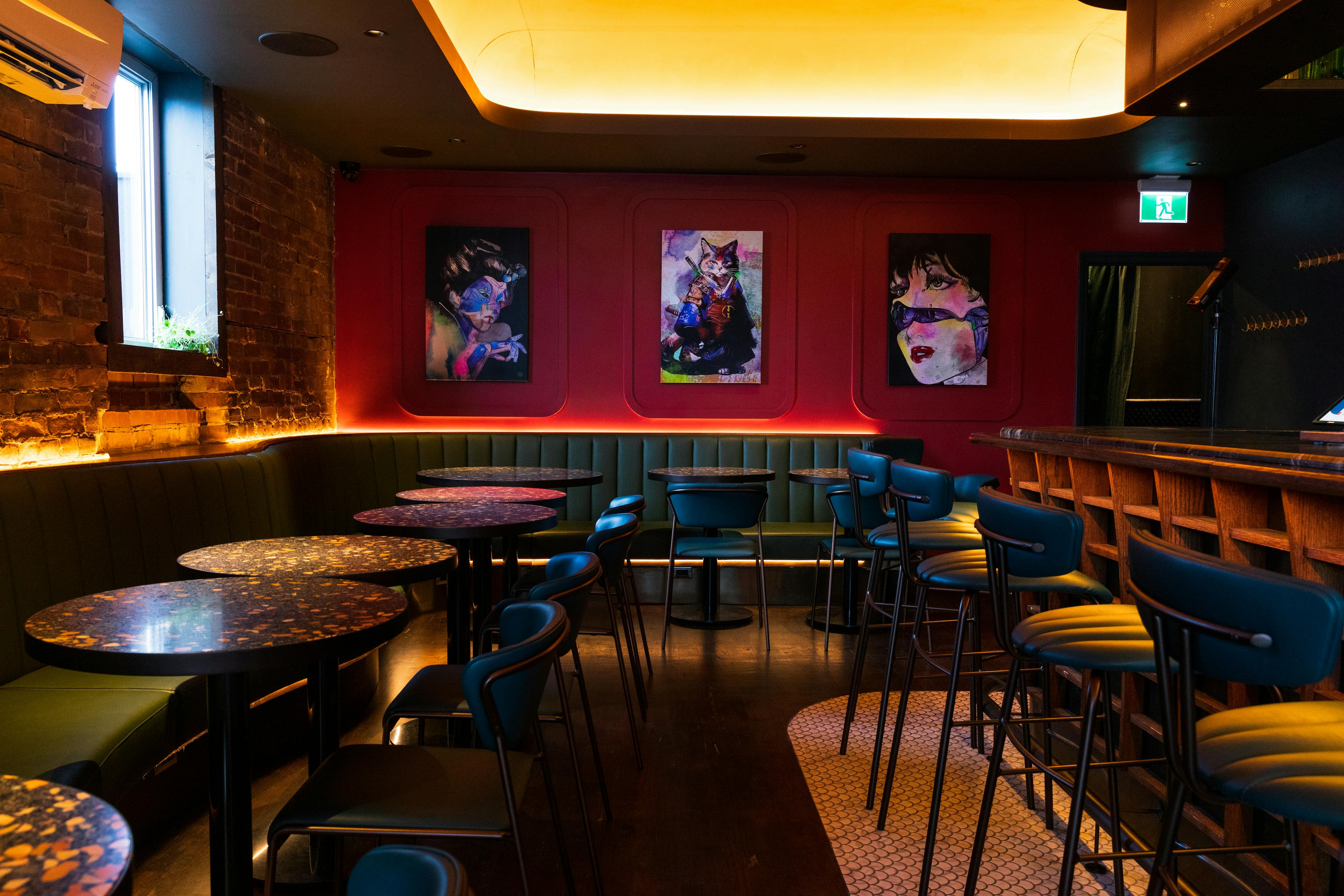
Equally non-stressful is the soundtrack, which depending on the time of night, ranges from modern jazz, blues and R&B to old-school hip hop (B-sides only), classic rock and even a little blessedly “inappropriate” heavy rock (AC-DC).
No pressure at all up front, where ample windows (and a summer sidewalk patio!) face kitty-corner onto the bucolicness that is Christie Pits. And all is definitely décontracté at the dusky back of the club, where sexy, tangerine lighting casts a relaxing spell.
Alfred Siu swears that the orange illumination “makes people look better at night,” but who needs to look good when you’re feeling this chill?
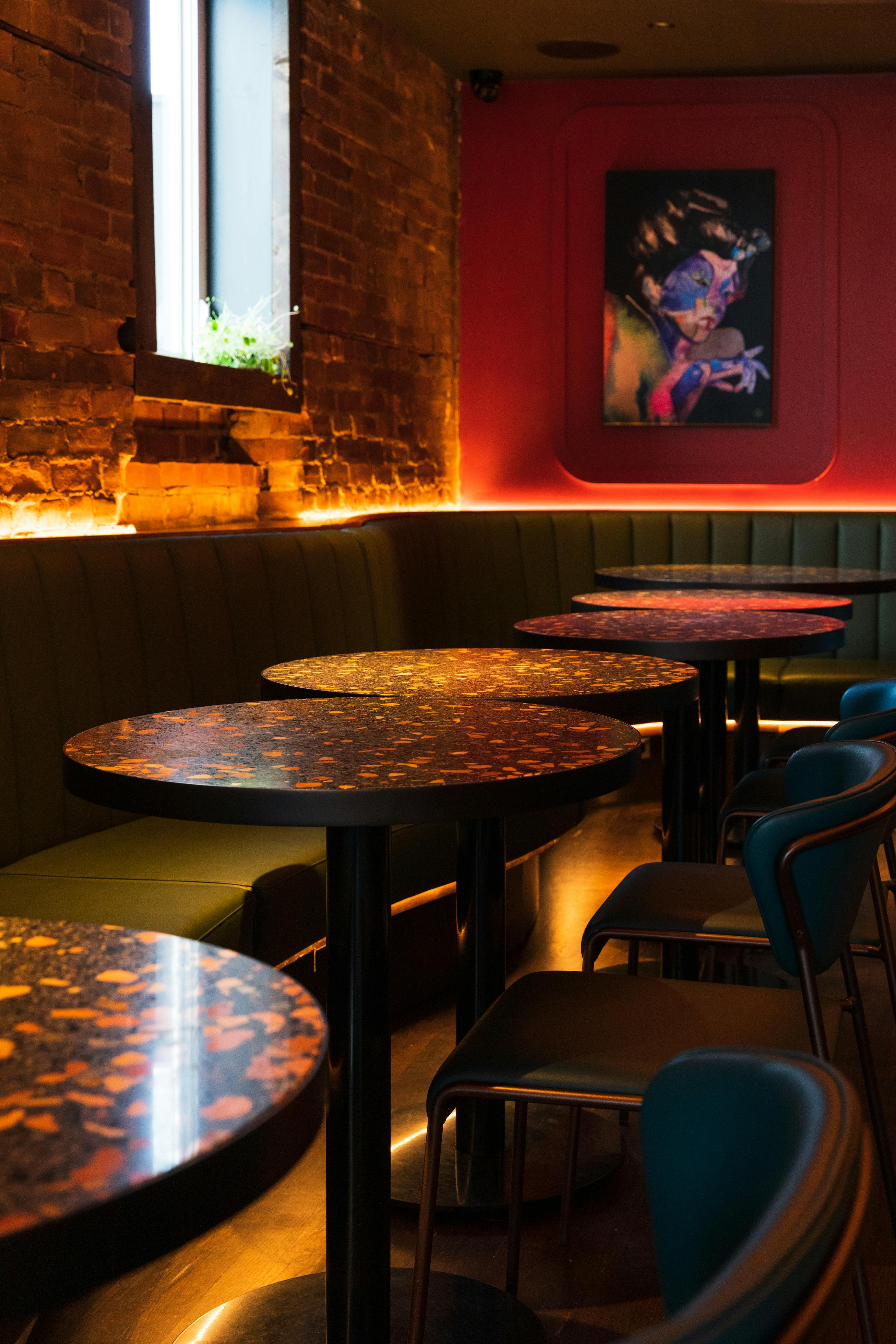
Siu obviously knows a thing or two about lighting, but as the owner of Overpressure and Project Gigglewater, his true expertise is cocktails. Indeed, it’s only once you’re comfortably seated, (beautifully lit), and ready to order one that the name “Overpressure” makes sense.
The bar menu includes a few stirred and shaken cocktails, as well as a smattering of wines and an impressive selection of Japanese whiskys and sakes. There’s also a single – but very much on-theme – beer: Rorschach’s Japanese-style rice lager, brewed in Toronto’s East End. But the thing you need to know about the majority of cocktails at Overpressure is that they’re under pressure, i.e, served from the pressurized draft taps behind the bar.
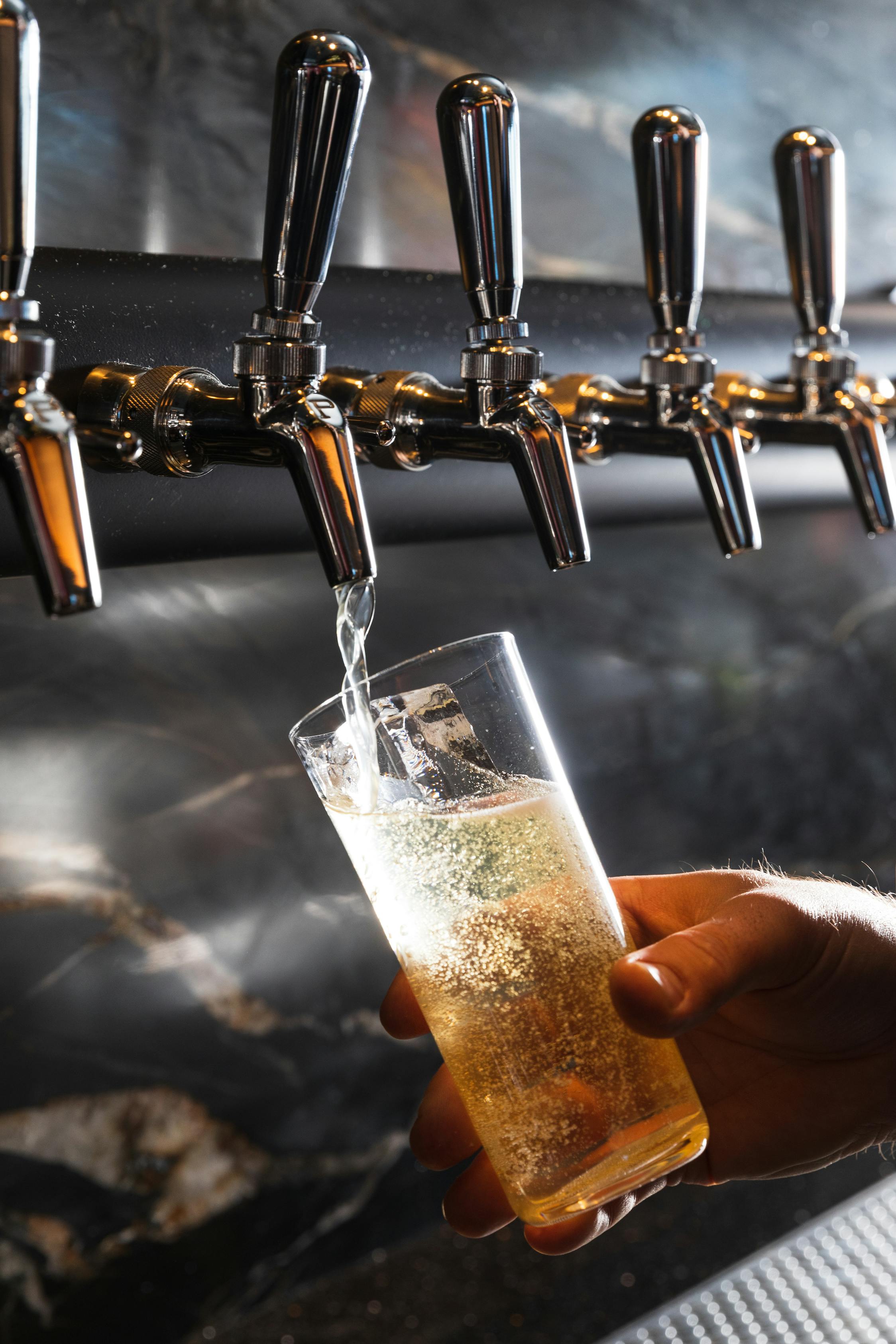
Overpressure isn’t the first bar in Toronto to serve cocktails on tap. But as far as bar manager Sasha Seigel knows, nobody else in town offers a whopping 12 of them. At any given moment, eight of the dozen are carbonated, four are nitrogenated – and all of them feature ingredients and flavours that are distinctively, and inventively, Japanese.
Siegel is no stranger to dreaming up drinks (he most recently did so atBar Banane). However, due to the complex science involved in creating cocktails that will be pumped out of a keg, at Overpressure the pressure is literally and figuratively on.
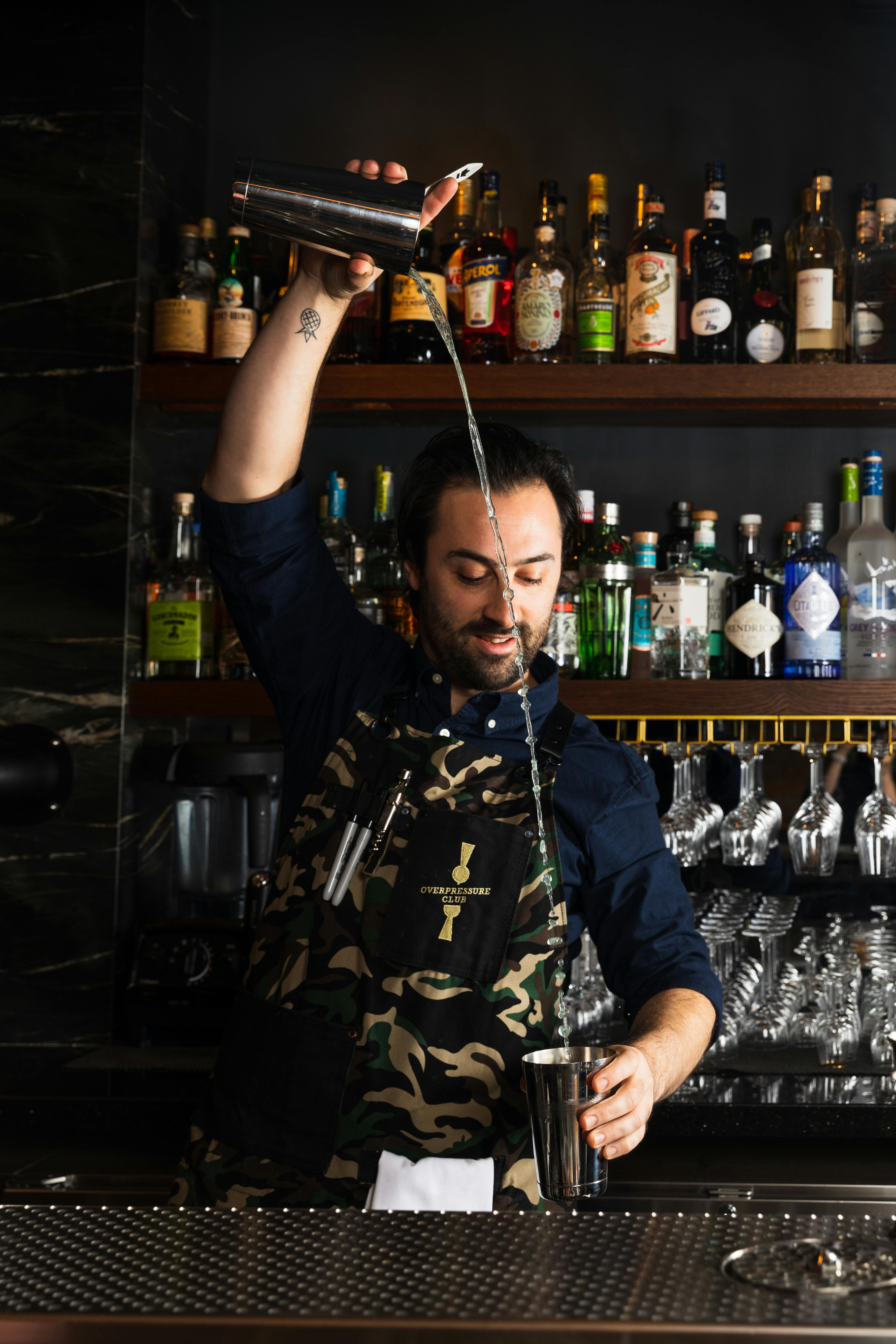
“It’s tricky,” confesses Siegel. “because taps have their own set of rules.” One of the most fundamental of these is that there can’t be any debris in the carbonation taps that force C02 into the drinks. As a result, all solid ingredients that go into the cocktails, even fruit juices, must pass through a rigorous, multi-day clarification process from which they emerge, clear and colourless, their flavours intact, but with the appearance of water.
Carbonation adds a compelling fizziness to drinks, but it also allows blood to absorb alcohol more quickly. “With super boozy carbonated drinks, people will blackout after one,” points out Siegel. “So we keep them lighter, more refreshing, with the use of flavoured diluting agents such as genmaicha tea.”
Meanwhile, infusing nitrogen directly into a cocktail leads to a rich, silky drinking experience. Imagine an egg-white sour with no actual egg whites in it. Siegel did – christened Queen of Hearts, it’s a creamy mix of brandy, amaro, raspberry, white chocolate, lemon, sencha and whey.
“There’s a huge learning process with this many taps,” emphasizes Siegel. “People just see you dispensing cocktails from them, but there’s so much work behind the scenes. We have a full-time prep person just for the taps and our pastry chef oversees all the bar prep.”
There’s also Siegel himself, who aside from curating Overpressure’s playlists (he played drums in various bands for 20 years), spends a lot of time dreaming up and finessing the cocktails.

Japanese bars take highballs very seriously and Overpressure follows suit, using premium whisky, and stirring it with ice for the obligatory 13 ½ rotations before adding soda. But when it comes to the cocktails on tap, things get a little less serious, as in the case of the tradition-busting Ricey Dicey. Although the requisite whisky is bracingly present, there’s also Bianco vermouth, a housemade ginger-bergamot cordial and genmaicha soda, all of which are force carbonated. Poured into a tall, slender glass, the pale yellow drink is topped with a nori chip coated in a thin slurry of rice paste.

Yoichi the Killer takes further advantage of Overpressure’s impressive stock of premium Japanese whiskies to pay punny homage to Ichi the Killer, a character from Tarantino’sKill Bill. In addition to Yoichi whisky, essential supporting roles are given to plum wine, vetiver cordial, black sugar and bitters. Matching the drink’s amber hue is a turmeric meringue, which guards the rim.
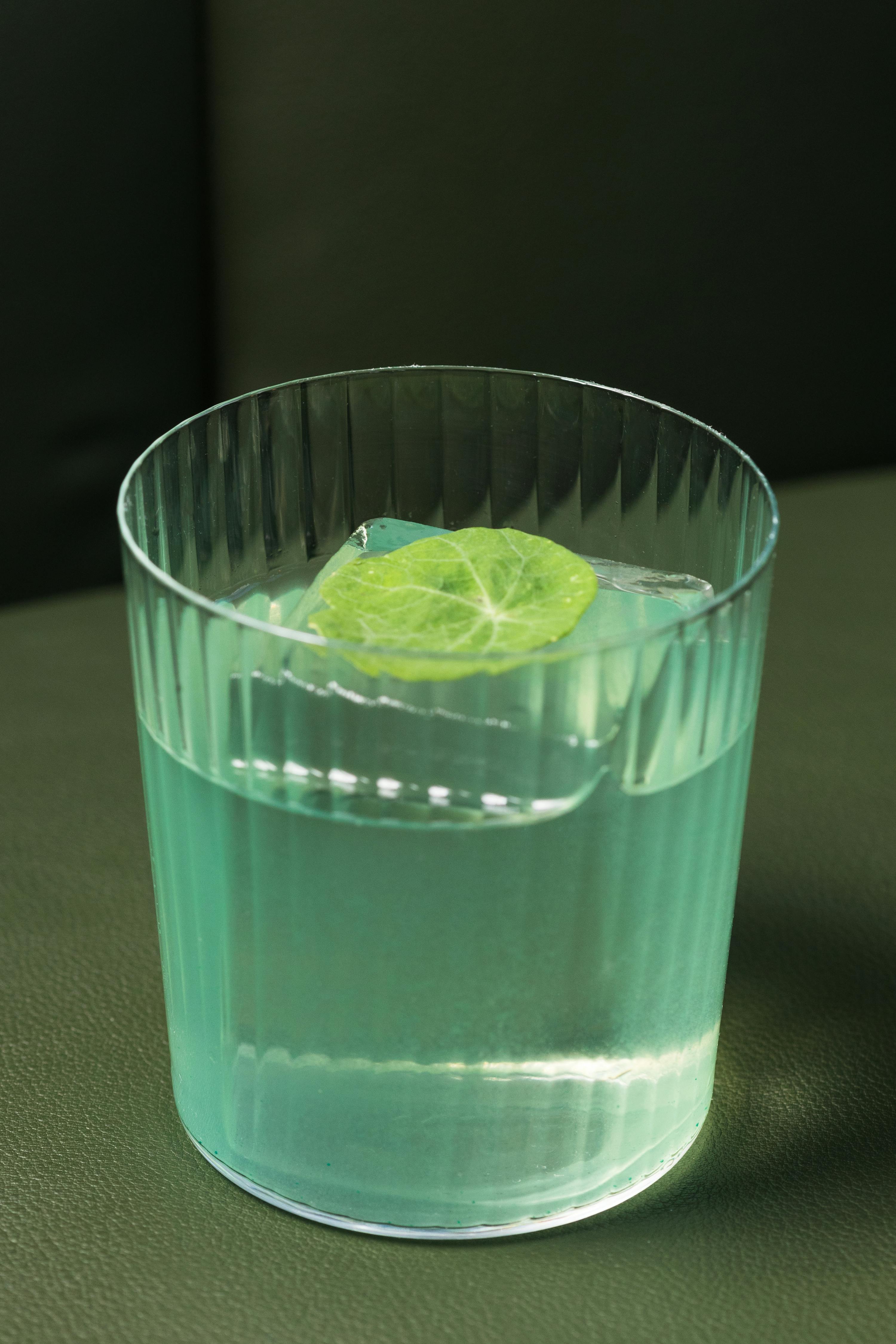
“I’m not someone who does conceptual drinks,” confesses Siegel. “I try not to be too much of a wanker.” That said, from an idyllic camping trip to Tobermory, Ontario, came the concept for Tobermory Trails. This refreshing gin-and-dry-vermouth-based beverage is infused with clarified citrus along with unusual, forest-foward ingredients – aloe, mastiha (a tree sap liqueur) and palo santo (an aromatic wood native to South America). Spirulina powder is responsible for the drink’s unearthly blue hue that, coupled with a spritz of cedar mist, sensually conjure a summery hike through the woods.
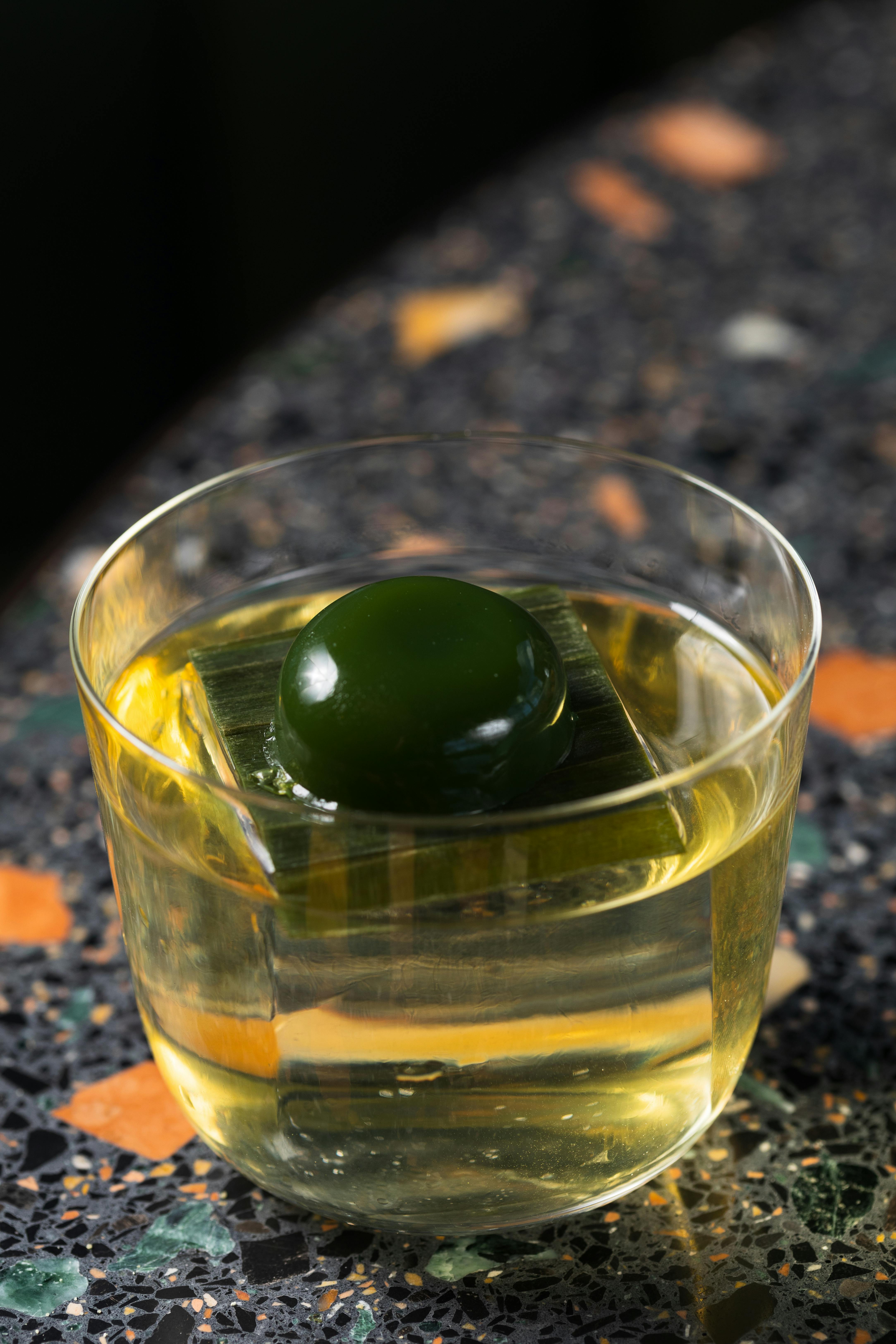
An element of blue also appears in Tropic Pursuit, albeit in a more equatorial context. Here a congregation of warm spirits – lime leaf-infused cachaça, Anejo tequilo, yellow chartreuse and fino sherry – get a tropical infusion of clarified mango-passion fruit cordial. Perched atop the drink, embedded in ice, is a quivering blue jewel that looks like a sapphire, but is actually mango nectar that’s been solidified and tinted with more spirulina.
Although Siegel has plans to flip some of the cocktails on a seasonal basis, he’s ultimately more interested in consistency than rotativity. As he acknowledges, “It’s easy to come up with a good drink, but it’s hard to come up with a great drink.”
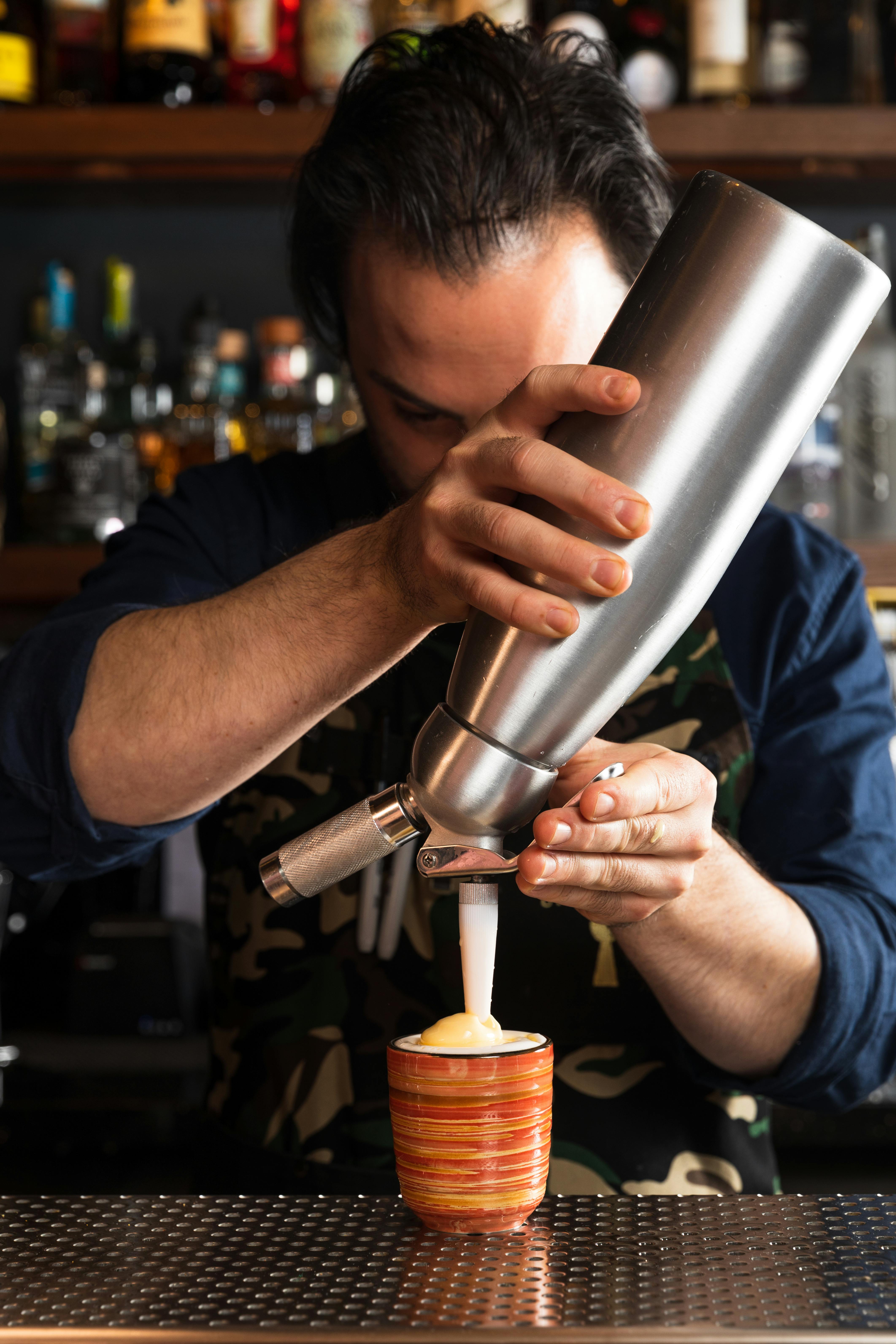
One that ranks with the greats – “it’s not going anywhere soon” – is the Pandan-o-rama. This nitro tap version of a milk punch takes its name from the fragrant pandan leaf that flavours the housemade falernum. A mainstay of tiki drinks, this rich, boozy spiced syrup is added to a base of blended rums, orange and lemon juice and a mixture of rice milk steeped with Thai tea and clarified with taro milk. The icing on the cake that is this drink is a sabayon of egg yolks and sugar, whose surprising umami kick comes from shots of sake and miso. Rich and creamy, but not too sweet, it’s served in a beautifully swirled ceramic tea cup.
Although Siegel describes Overpressure Club as a cocktail bar “first and foremost,” it’s one where food is definitely not an afterthought. The hot and cold snacking plates designed by chefs Moses Ventocilla, Jae Cho and Eileen Martin (responsible for pastries) are as inventive, and Japanese-inspired, as the drinks with which they’re meant to be paired.

And so there are oysters, because as Martin points out, “if people go for happy hour in Toronto, they want to have fucking oysters – and you have to give people what they want.” That the fresh, plump oysters served at Overpressure come with a leek mignonette, house hot sauce and wasabi (and cost a mere Toonie each from 5 to 7pm) make them that much more desirable, particularly when paired with a Ricey Dicey. “That slaps, man!” says Martin of the coupling.
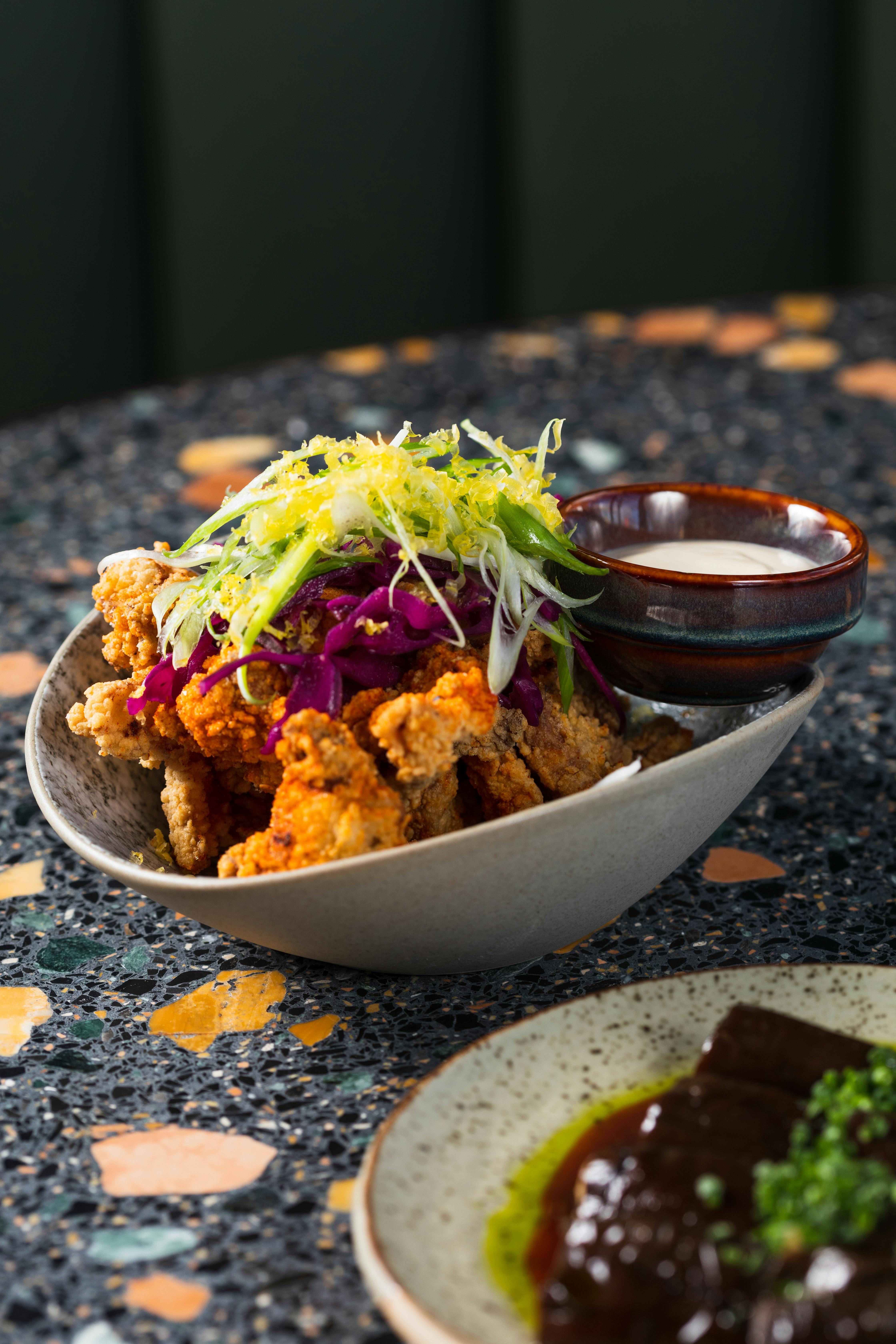
Another izakaya standby – karaage – arrives with a side of creamy house mayo and a vibrant garnish of preserved lemon slaw whose fresh acidity plays counterpart to the chicken’s crispy deep-friedness.

More unusual, but equally succulent is the pork jowl, slow-cooked for 12 hours, then bathed in a sticky yuzu–kecap manis (sweet Indonesian soy sauce) glaze. Served in thick, tender slices, it’s accompanied by an aromatic perilla leaf, which can be used for wrapping.
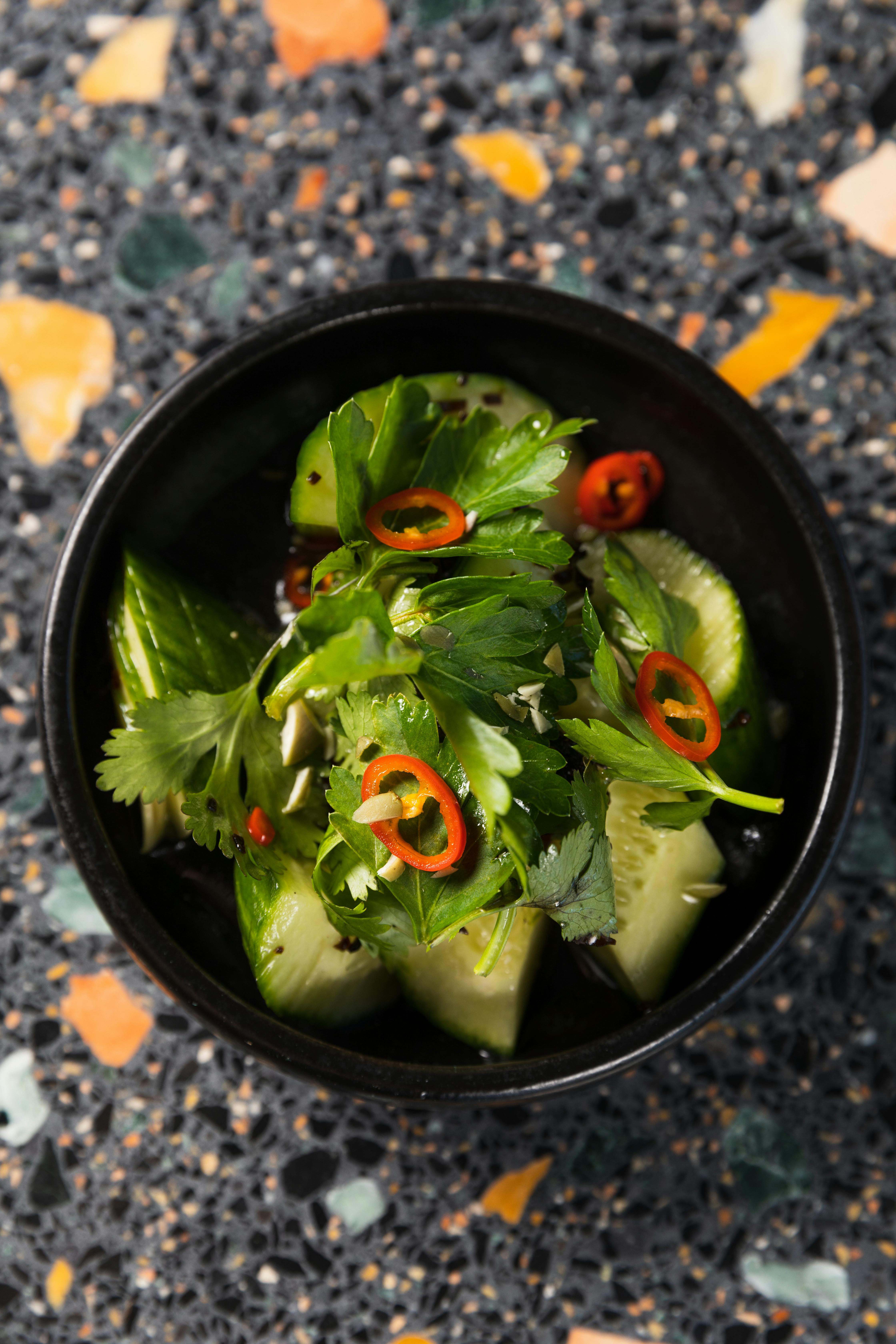
Overpressure’s vegetarian offerings are equally abundant. A simple cucumber salad with fresh herbs offers a lot of refreshment and crunch, qualities that are amped up by briny, piquant house pickled chilis.
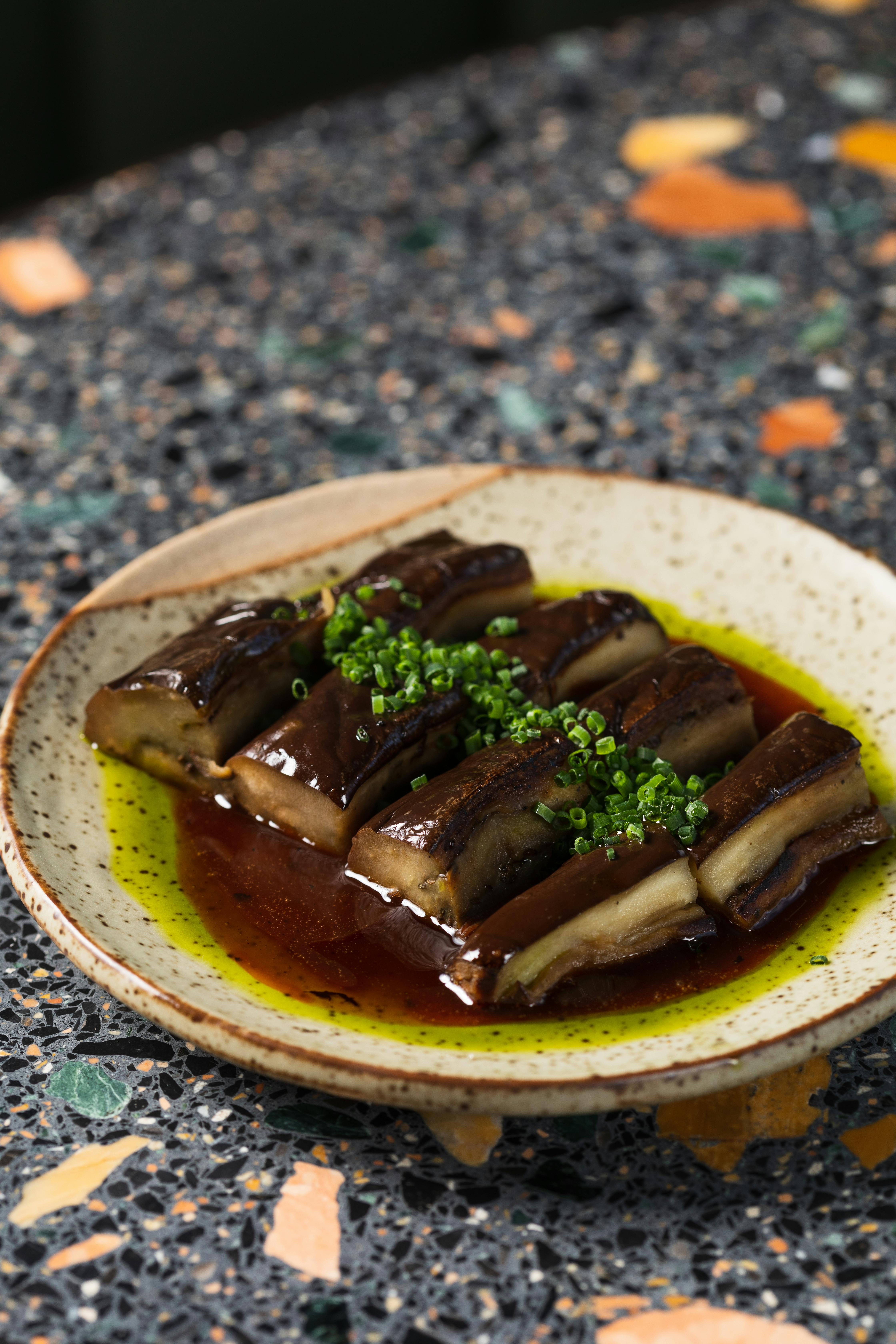
Also seemingly simple is the miso eggplant. Ventocilla was driven to recreate this dish after a favourite restaurant’s version began an inexplicable slide into mediocrity. It took a couple of years for him to nail the intricate play of flavours and textures, but the winning formula involves an eggplant that’s basted with soy butter and creamy miso, roasted, dried out and refrigerated. After a final searing in more butter, the crisp-skinned yet tender wedges are doused in a sweet-savoury caramel-leek oil sauce.
On a sweeter note, Nori Honey Toast is another Ventocilla invention, based upon a favourite 2am, Covid-era snack that was years in the tweaking. This clever riff on French toast incorporates milk bread, burnt honey miso and sweet furikake and has already garnered a strong fanbase.

There there’s the Harajuku Pearl. Chewy mochi donuts sit atop a thick foam of genmaicha-infused chocolate mousse edged in jade green matcha pearls and sprinkled with sweet puffed rice. Created by Martin, and named after Tokyo’s funky street fashion hub, this visually and texturally fun – not to mention gluten-free – plate cleverly weaves together disparate flavours, both Japanese and non.
In a nutshell (or a pearl), it’s a metaphor for Overpressure itself, whose mission of bringing together cocktails and snacks that straddle both East and West reflects Toronto as a whole, but more specifically this fast-changing strip of Bloor West, home to traditional Korean eateries as well as a sudden explosion of innovative new bars and bistros.

As Siegel notes, “historically, all the cool stuff in Toronto has a tendency to move west. And I think that’s still happening. But at the same time, it’s also starting to move north. I don’t want to jinx it, but I think this could be the new strip. I think it’s Bloor Street’s turn and we’re happy to be a part of it.”
Recommended For You